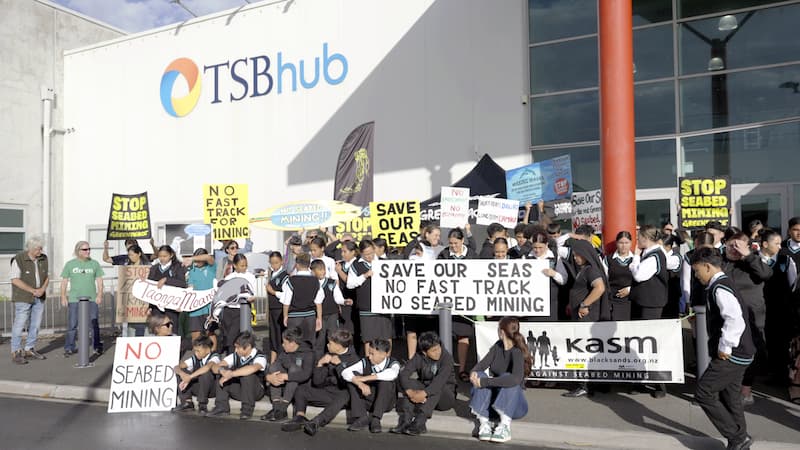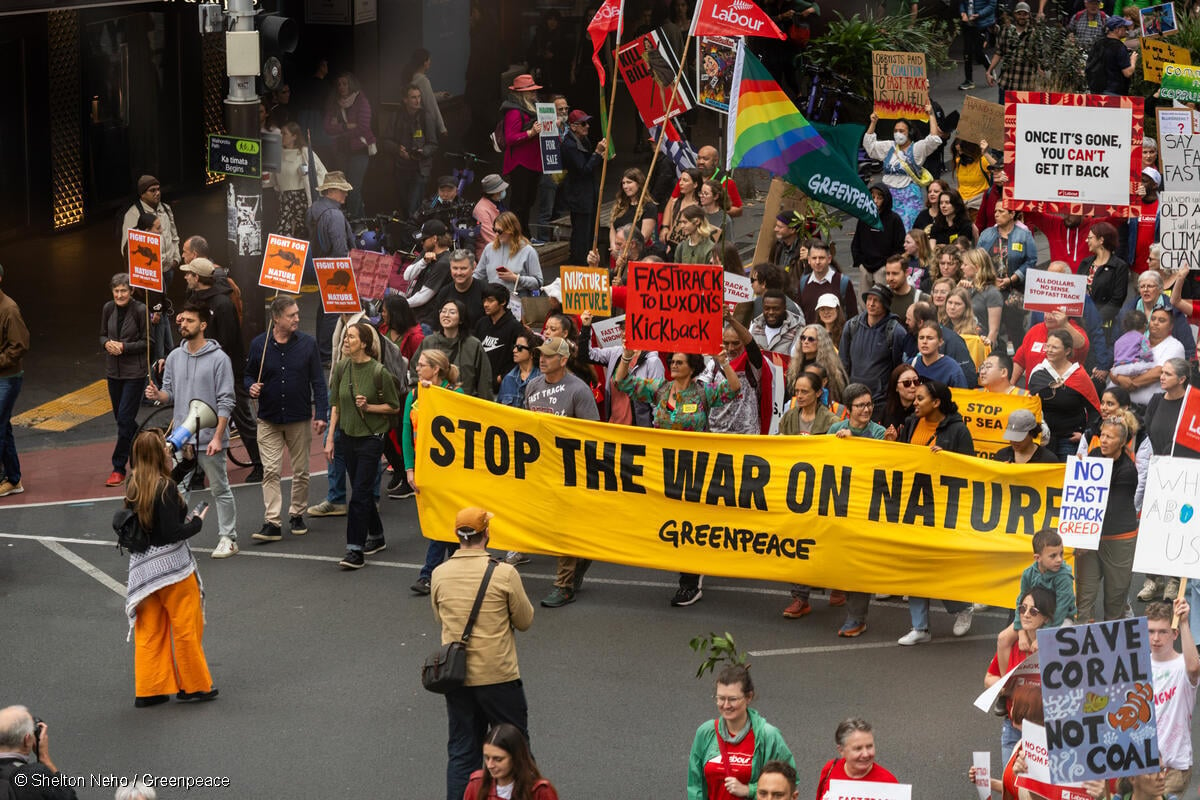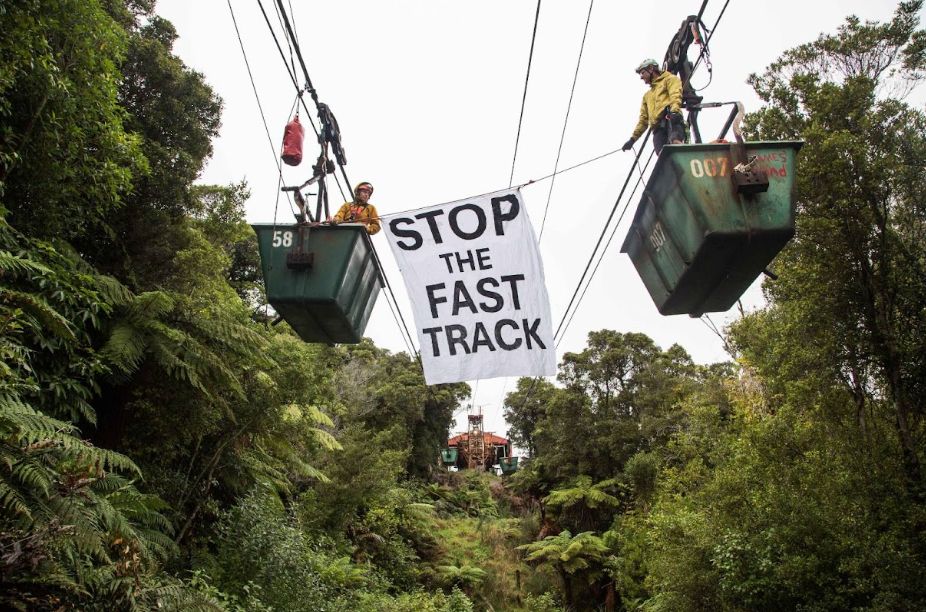On 15 September 1971, a group of activists set out in a creaky wooden boat with the first Greenpeace banner across its bridge. Their goal was to stop the world’s largest military superpower from detonating a nuclear weapon at a remote military site in Alaska called Amchitka.
Since then, Greenpeace New Zealand, now called Greenpeace Aotearoa, has campaigned to protect the Earth’s oceans, forests, climate, people, and wildlife from pollution, fossil fuels and deforestation – all made possible thanks to amazing supporters like you. Thank you so much for being a part of this amazing legacy.
You’re fighting for democracy and against unchecked pollution
The Luxon Government’s “war on nature” has been epitomised by a new Bill to fast-track consents for development projects, introduced in March this year. It could be the single worst law ever passed for the environment.
The draft legislation would override existing environmental laws, undermine Te Tiriti and remove local communities’ right to have a say on development slated for their neighbourhood. It would allow just three Ministers to approve or deny development projects, including ones that have already been rejected by the courts like seabed mining in Taranaki. It is anti-democratic, anti-transparency and creates vulnerability to corruption.
That’s why on the same day as this Bill was introduced, your support helped install a giant tap pouring cow effluent outside the Beehive. The 4-metre-tall tap was suspended on Parliament lawn with dairy cow effluent pouring out of it, bearing a message reading ‘Stop Fast-tracking Pollution’. Gen Toop, a Greenpeace board member, also made her way into a Government media stand-up, directly challenging Luxon about his war on nature. This raised crucial public awareness while also sending a warning to Luxon that we’ll fight back against this undemocratic and destructive fast-track bill.
Together with our supporters and allies, Greenpeace will march to Stop the War on Nature on June 8 at 1 pm in Aotea Square, Auckland. Please join us! Find out more at www.marchfornature.nz
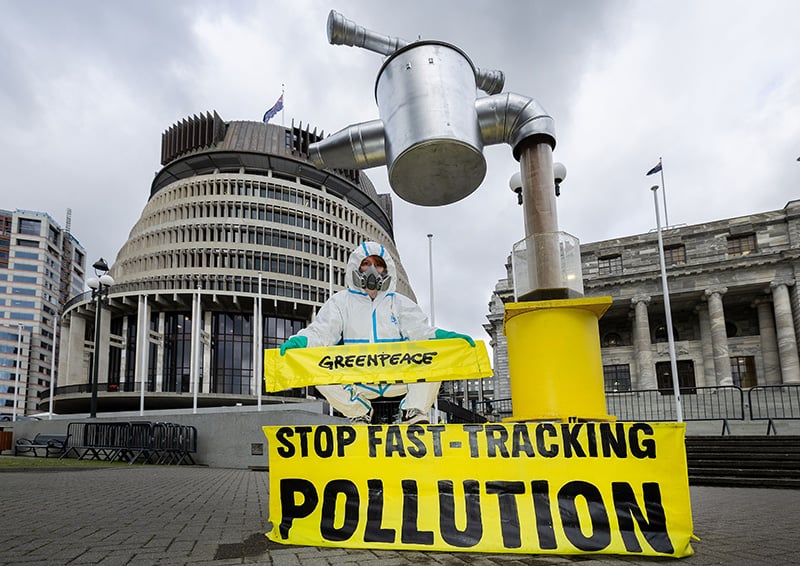
You’re helping New Zealanders fight for safe drinking water
The Luxon Government has announced that it plans to remove important freshwater and animal welfare protections in favour of allowing big businesses like Fonterra to produce more pollution.
Nitrate contamination in drinking water, lakes, and rivers comes from the intensive dairy industry’s use of synthetic nitrogen fertiliser, and from cow urine. The current freshwater protections aren’t perfect, but they are better than nothing, and they are working. Removing these protections will worsen water contamination and also mean more cows giving birth in mud this winter.
Many rural New Zealanders on bore or well water are at risk of having high levels of nitrate contamination in their drinking water, which can increase health risks such as bowel cancer and preterm births.
Thanks to your generosity and support, we have been able to hold more free community water testing events, where people can bring a sample of their household water to get tested for nitrate contamination. Our team has visited towns right in the heart of dairy country in Canterbury, Southland, Taranaki and Waikato. The results have been stark: many bore and well users have come back with high levels of nitrate contamination that could be negatively impacting their health. Some town tap water supplies have even been testing over 5mg/L, which is above the threshold for health impacts. But, thanks to the support of people like you, these New Zealanders are now informed about their risks – and together, we are demanding better from our leaders.
In addition to this, we’ve continued to offer mail-in water testing, so even if you don’t live in an area where we’ve done community testing, you can find out if your water is polluted.
Are you curious about the nitrate levels in your local area? In November, the groundbreaking new interactive ‘Know Your Nitrate’ map was launched. This map combines the anonymised data from hundreds of individual tests conducted by Greenpeace with council and NIWA data to show nitrate contamination levels in drinking water across New Zealand. It is an immense public resource which is constantly building as new data is added.
Explore the map that your support has made possible: greenpeace.nz/nitratesmapAR
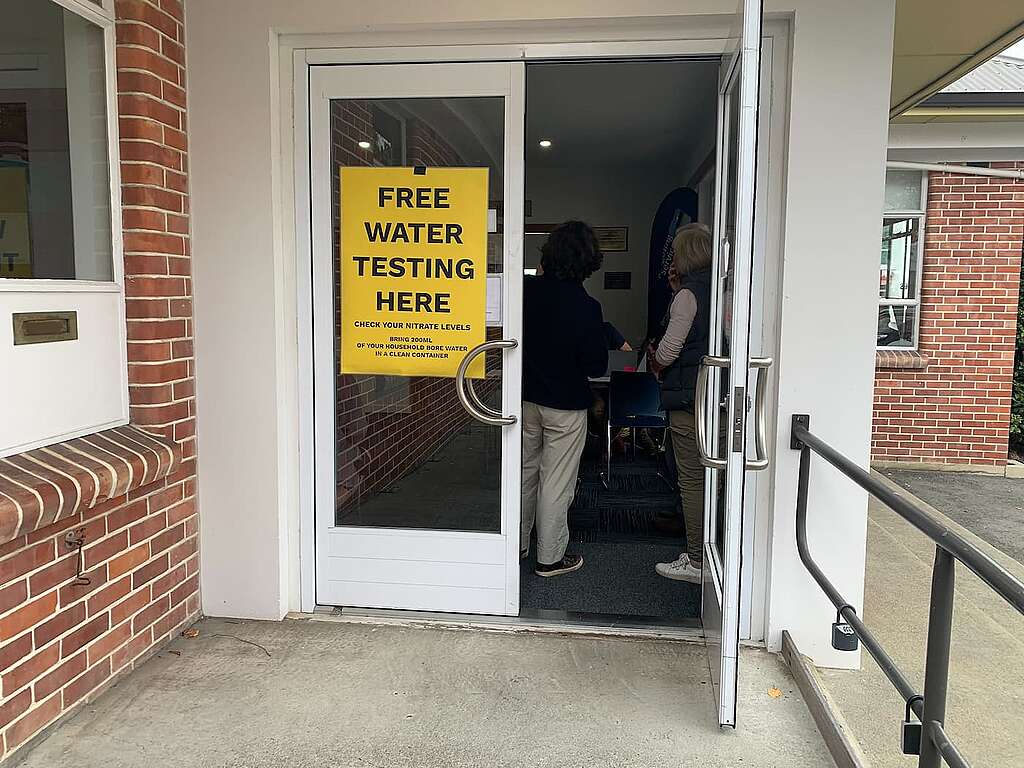
You’re protecting the ocean and the creatures that call it home
You have been fighting for justice and transparency from the commercial fishing industry. We have long been calling for cameras on the full commercial fishing fleet to monitor the kinds of ‘’non-target’’ species fishing vessels are dragging up.
Thanks to people-power, currently, 127 vessels have been fitted with cameras. New data released by the Ministry for Primary Industries has revealed that commercial fishing companies have been massively underreporting their catches of dolphins, albatross and fish prior to the cameras on boats programme. For the 127 vessels now with cameras, reporting of dolphin captures increased nearly sevenfold, while reported albatross interactions were up 3.5 times. The reported volume of fish discarded has increased by almost 50%. That’s shocking!
This is proof of concept for cameras on boats and why your donations have helped launch a new campaign to make bycatch footage public.
There is now undeniable evidence that shows that for decades, the unmonitored commercial fishing fleet has not been accurately reporting their interactions with protected species of dolphins and seabirds, nor the amount of fish they catch and discard. This data shows us exactly why we need cameras on the whole commercial fleet – including deepwater vessels. It also shows what the commercial fishing industry tries to hide – and what they don’t want you to know. As an environment champion, you – and all the public – should have access to this footage. This information is in the public interest, so should not be gatekept by the industry. Everyone should know the cost commercial fishing has on the ocean, so they can protect it!
Your voice is needed! Please sign the petition to make bycatch footage public and keep the fishing industry accountable.
You’re protecting the seabed
For the last few years, you have made sure we can interrupt reckless companies at their every attempt to start mining the seafloor, starting up another horrifying extractive industry.
Scientists warn deep sea mining would cause severe – and potentially irreversible – damage to the ocean, and all the creatures that live there. Many that likely haven’t been discovered yet!
In December 2023, Greenpeace International activists carried out the first-ever occupation against deep sea mining as part of a nearly 2-week protest in the Pacific Ocean. A court case was brought against Greenpeace in the Netherlands, asking for our activists to be banned from coming within a 500-metre radius of their ship. However, we had a great victory when the judge denied this request!
On the local domestic front, your support has meant we’re able to keep up the more than decade-long fight to prevent Trans-Tasman Resources (TTR) from mining the seabed in the precious pygmy blue whale and critically endangered Māui dolphin habitat.
Greenpeace Aotearoa joined people from the local community, Ngāti Ruanui, Kiwis Against Seabed Mining and Climate Justice Taranaki to show a united opposition to mining in the South Taranaki Bight at a hearing of the Environmental Protection Authority (EPA) in Hāwera from March 13 to March 15 2024.
While more hearings were planned, TTR suddenly pulled out from them and is banking on the Government’s fast-track processes to give them the green light later in 2024. However, we’ll stand up to them, like we always have, every step of the way.
Thanks to you, our incredible supporters, for making this resistance possible.
You can sign our petition for a global ban on deep sea mining here.
